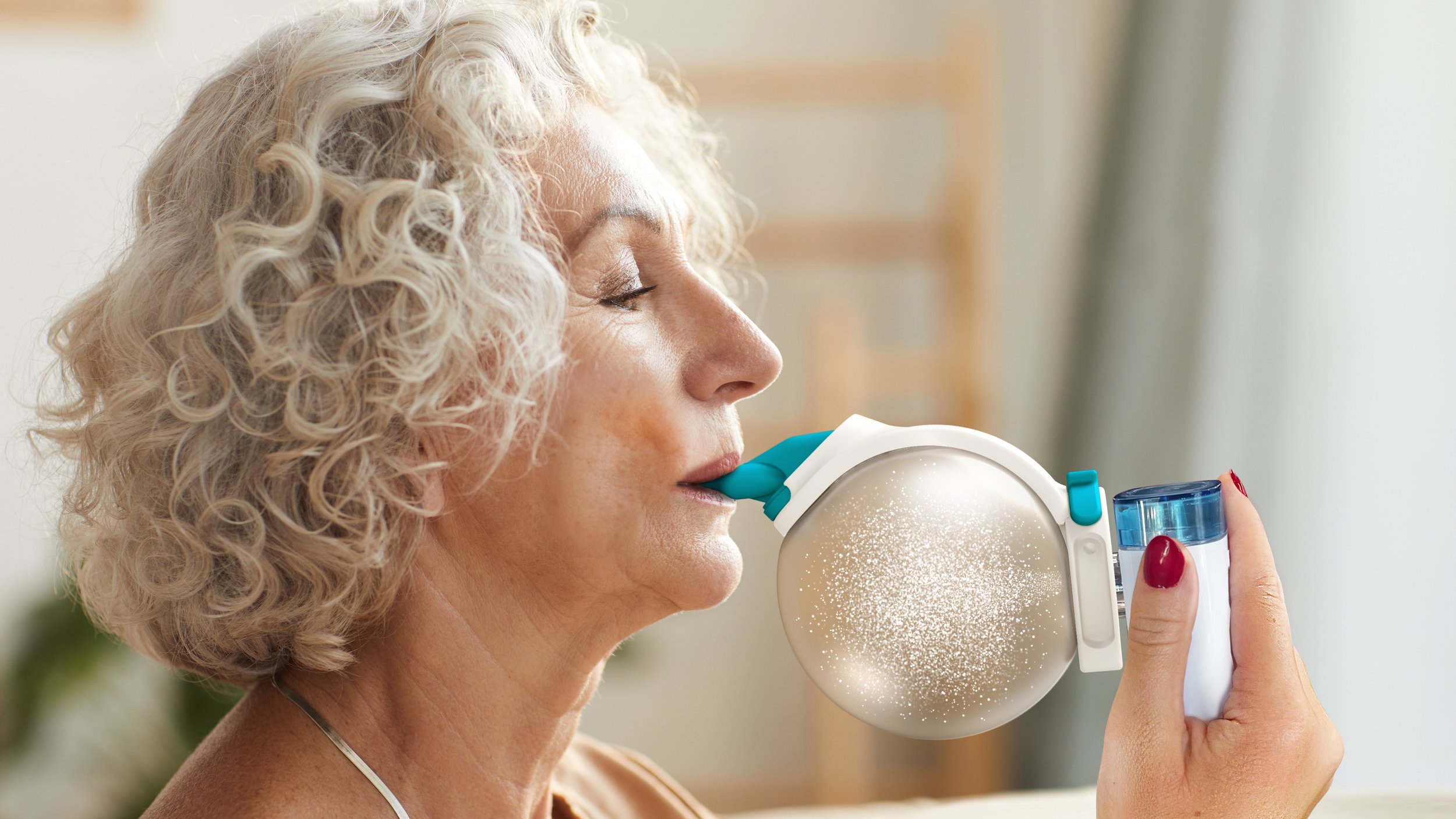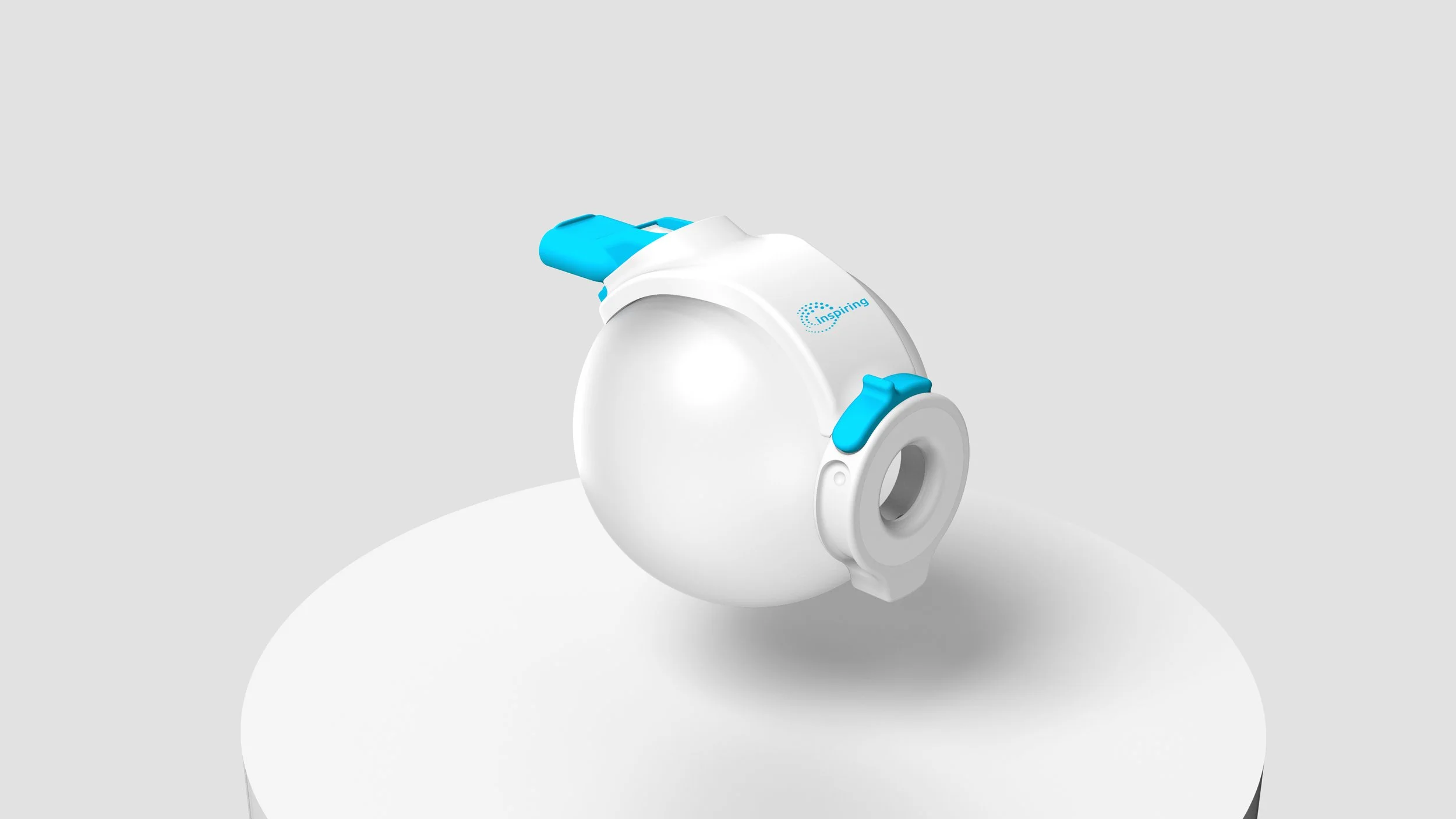After 40 years of watching patients with chronic respiratory conditions struggle to use their inhalation devices effectively, Professor Barry Clements invented the Universal Spacer System.
The USS is being developed to apply effective spacer (reservoir) capacity to the main forms of inhalation delivery devices including Nebulisers, Metered Dose Inhalers (Puffers) and Dry Powder Inhalers.
The proprietary design of the USS includes a unique, thin-walled, spherical collapsible reservoir, which forms a buffer between the delivery devices and the user’s mouth. Drug released from the delivery device will flow into the reservoir and can be inhaled. When the user breathes out, exhaled air is diverted to the outside air, while the reservoir self-re-expands, forming a store for the aerosol produced while the user is breathing out.
Design
With an innovative design, the device is composed of three components - Hub, Reservoir and Mouthpiece.
The Hub, supports the reservoir and houses the inlet (where delivery device attaches) and outlet (where the mouthpiece attaches).
The spherical, thin-walled, Reservoir is collapsible and re-expandable. During inhalation the reservoir collapses as it empties the stored aerosol into the user’s mouth via the mouthpiece, with the collapsing reservoir providing visual feedback that the medication is being delivered. During exhalation, the reservoir re-expands gently by collecting new aerosol until the user is ready to inhale again.
The Mouthpiece incorporates functionality that controls the flow of aerosol during breathing, allowing delivery of aerosol from the reservoir during inhalation and allowing the exhaled air to exit the system.
The USS has been designed to:
Improve delivery efficiency
Provide consistent drug delivery with no decline in delivered amount regardless of user’s condition
Prevent significant aerosol drug loss during exhalation, resulting in reduced drug wastage and reduced risk of environmental contamination and infection
Be easy to use, not requiring difficult coordination, by the reservoir synchronises naturally with the user’s breath pattern which controls the collapse and re-expansion of the reservoir
Provide visual feedback to user that dose has been delivered
Control the flow of entrained air, or supplemental oxygen if needed at the time.
Be foldable for easy transportation




